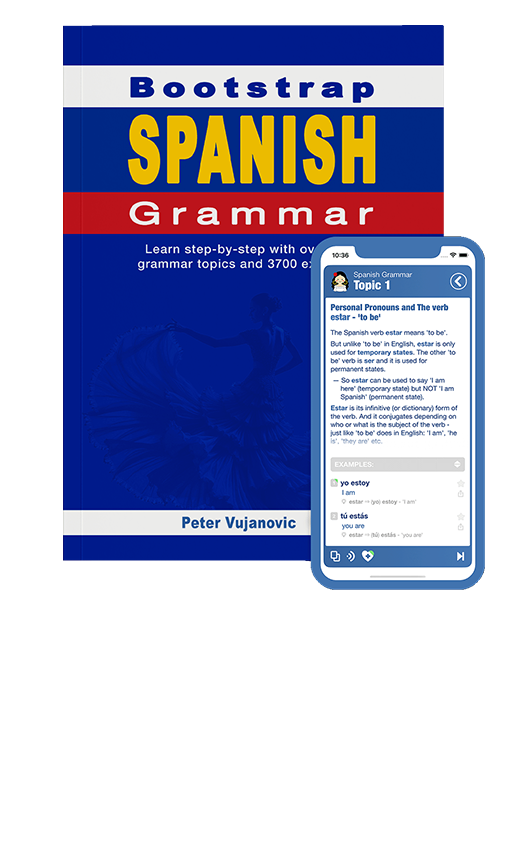Spanish grammar - Indefinite articles - un and una |
|||
|
|||
The singular indefinite article in English is 'a' (or 'an'). It marks a single previously unspecified object. In Spanish the indefinite article serves the same purpose but there are two - depending on gender: un is the masculine and una is the feminine. Notice that un and una also mean the number 'one' - which has a gender in Spanish. |
| Examples: | |
|
Yo soy un hombre.
I am a man. |
|
|
Yo soy una mujer.
I am a woman. |
|
|
Él es un estudiante.
He is a student. |
|
|
Ella es una maestra.
She is a teacher. |
|
|
Un policía está aquí.
A policeman is here.
|
|
|
¿Dónde hay un baño cerca?
Where is a toilet close by?
|
|
|
¿Dónde hay un paraguas?
Where is an umbrella?
|
|
|
La maestra es una estudiante.
The teacher (feminine) is a student. |
|
 |
|



